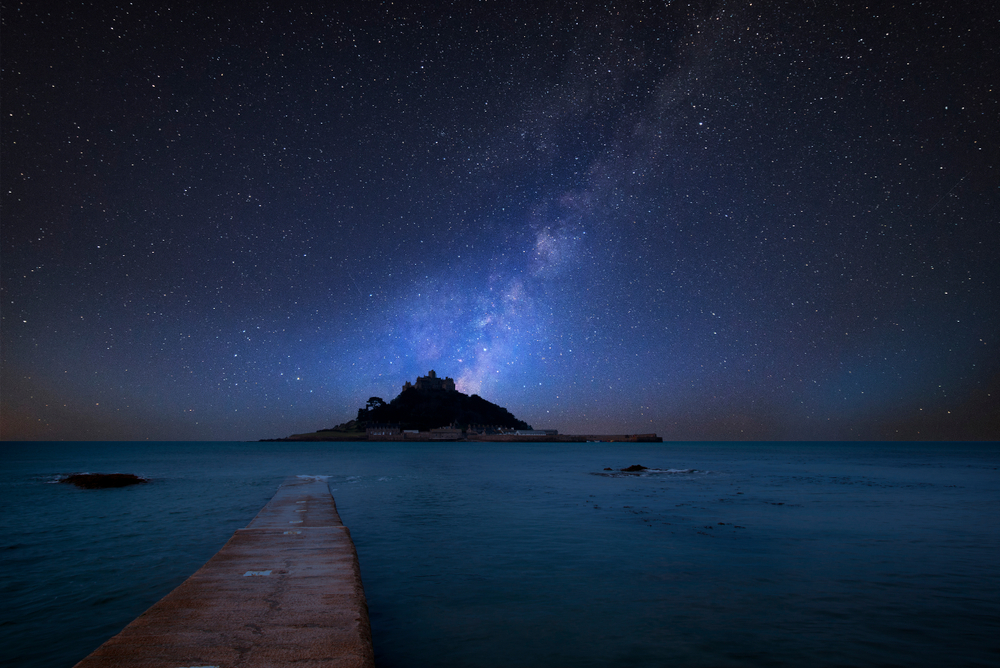While many visitors to Cornwall keep their eyes fixed firmly on the impressive coastal horizons, at night the real action is taking place above their heads – way above. The north Cornish coast is one of the very best places in the UK for stargazing as the dark night skies make it possible to witness everything from the Milky Way to meteor storms in amazing detail.
If you don’t know your Ursa Minor from your Canis Major, read on to find out how to get started.
Getting started: first turn out the lights
For the very best stargazing, it’s important to get out of town. The less light pollution, the clearer the night sky will appear – and the more magical the whole experience will be. But if you’re just dipping your toes it isn’t totally necessary to leave the house. There is much that can be seen from home, just head to the highest vantage point available and switch off all the lights.
What’s the best time to stargaze?
You’ll need to be in sync with the phases of the moon. For fainter or more distant objects, the moon should be at its least visible – the ideal time is around a new moon or just before dawn.
If it’s the moon you’re interested in observing, however, wait for a few days before or after a full moon when the glare is not quite so intense. Use this handy Dark Skies Calendar to help you pick the best time.
Specific planets and constellations can be seen at different times of the year. You can find out when to schedule your hunt for Cassiopeia or the Orion Nebula using a dedicated astronomy app, such as the ones mentioned here.
Best stargazing locations in North Cornwall
There are several Dark Sky Discovery Sites in North Cornwall, so called because they are both accessible and free from light pollution.
Carnewas is a cliff top location with views over Bedruthan Steps. Stop in the National Trust car park and head to the nearby picnic area then make yourself comfy.
St Agnes Head also has ideal conditions. You can stop in the car parks above Wheal Coates and Wheal Fortune or below the western edge of St Agnes Head.
A little further down the coast at Holywell Bay are the monumental Gull Rocks, which stand in striking contrast to the night sky beyond.
Bodmin Moor is an International Dark Sky Place, a title bestowed on just two locations in the UK for their lack of light pollution. Colliford Lake and Minions, close to the A30, are two high spots for stargazing.
What to pack for a stargazing expedition
When you have the perfect conditions at the correct time, get yourself ready to head out. It’s important to be prepared, especially during the winter months. Here is a checklist of some of the essentials for learner stargazers.
- Warm clothes, socks and boots, plus a hot water bottle and blanket if you’re in for a long session
- Waterproof mat if you’d like to lie back and look straight up
- A flask of your favourite hot drink
- A torch, because you still need to be aware of your earthly surroundings
- Camera and tripod to document your findings
- Fully charged phone, with astronomy app downloaded
More tips for beginners
For the full effect give your eyes time to adjust to the dark. It takes 15 minutes before you’ll notice any difference but after around 40 minutes they will have completely switched to dark mode.
While astronomy apps are great, bright phone screens will only reduce your ability to see the universe through your own eyes.
If you’re taking photos on your phone, turn the flash off and ignore the zoom. Light sensitivity is crucial, so set the ISO to 100 and increase in small increments to get the best image.
Beginners don’t need any fancy kit – there is already so much to see with the naked eye, whether it’s meteor showers, distant galaxies or shooting satellites.
